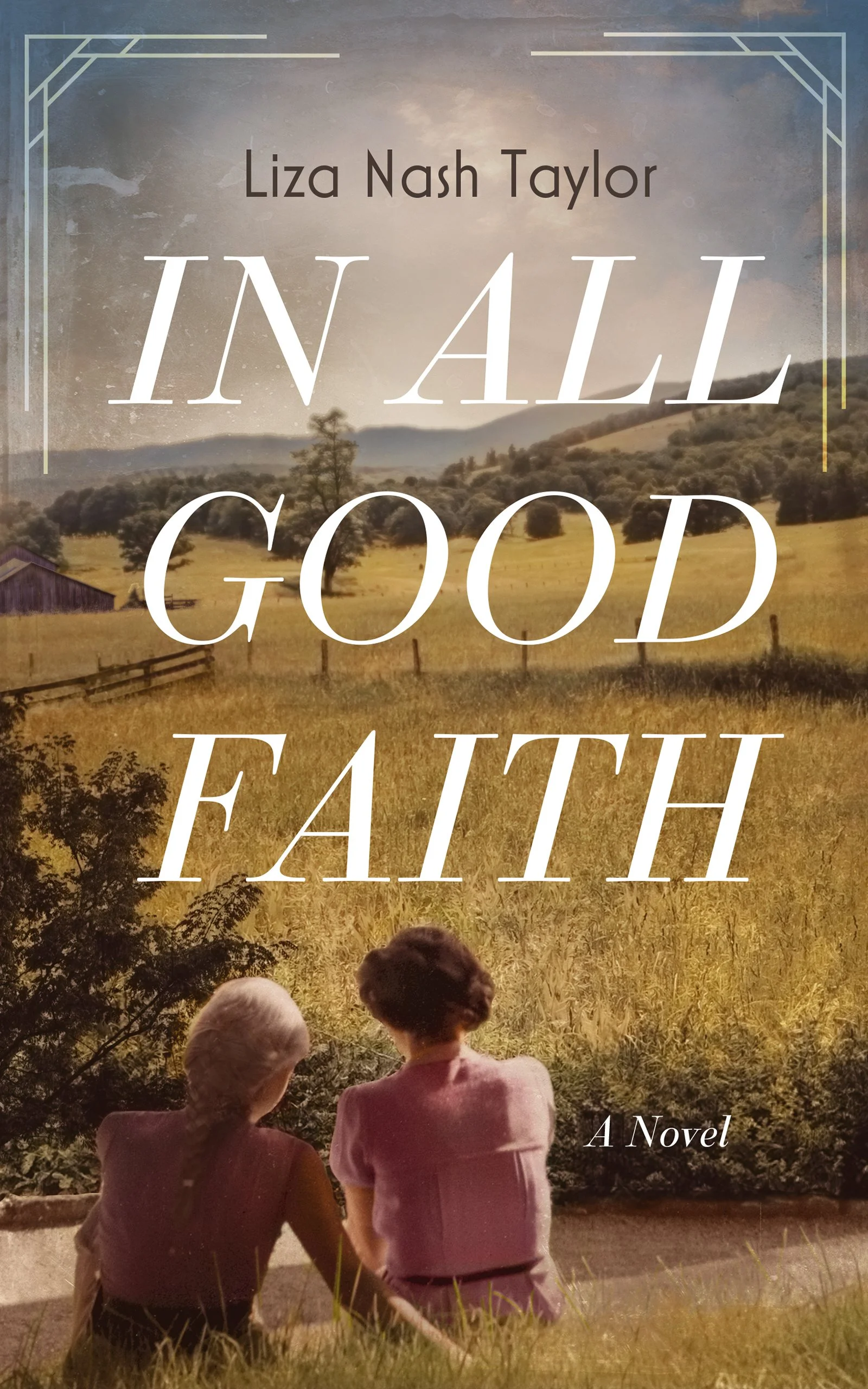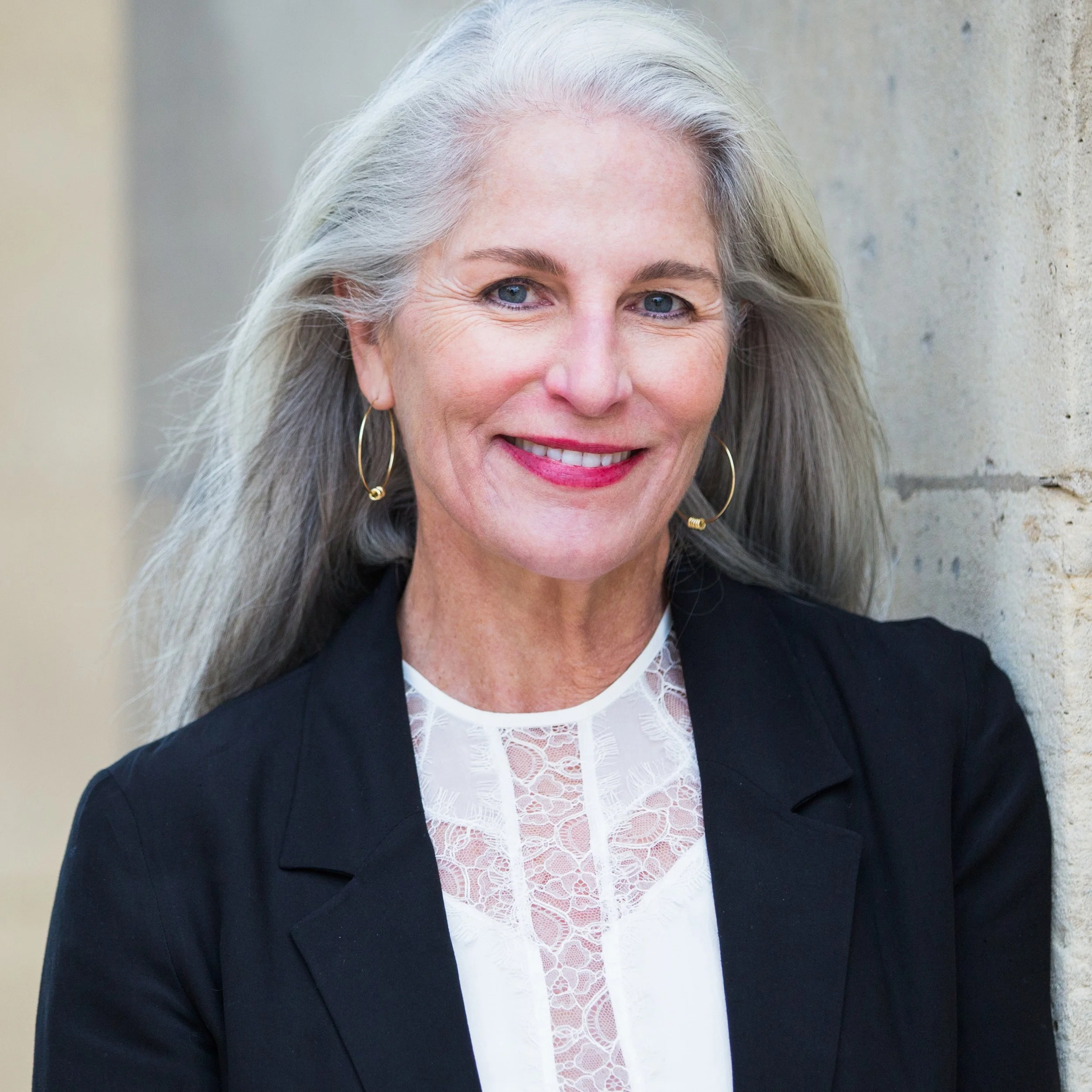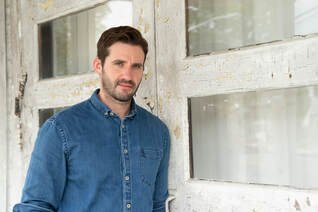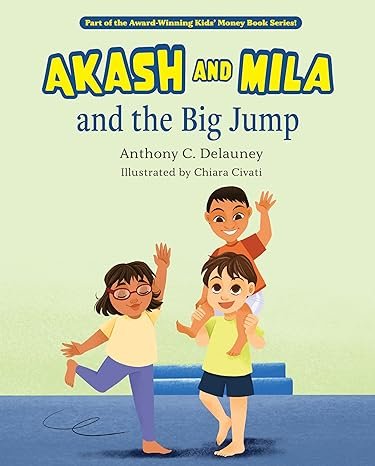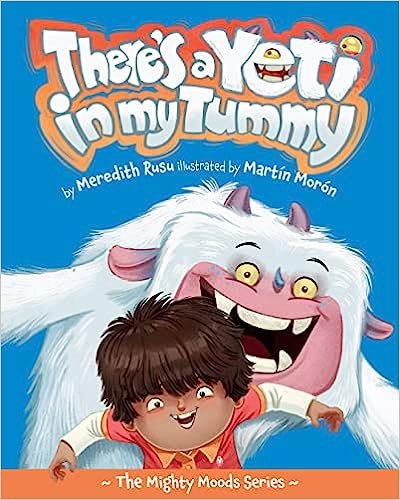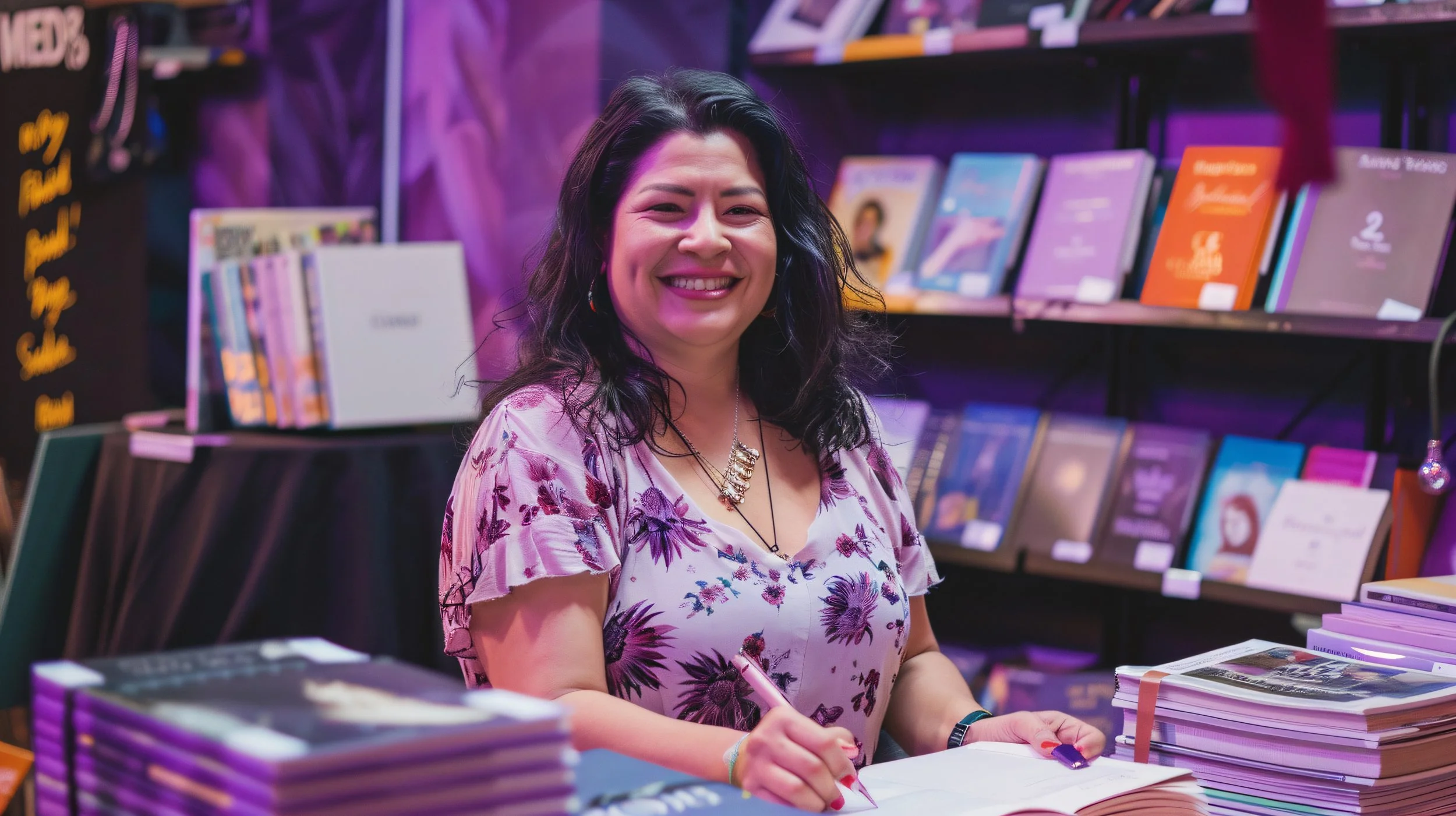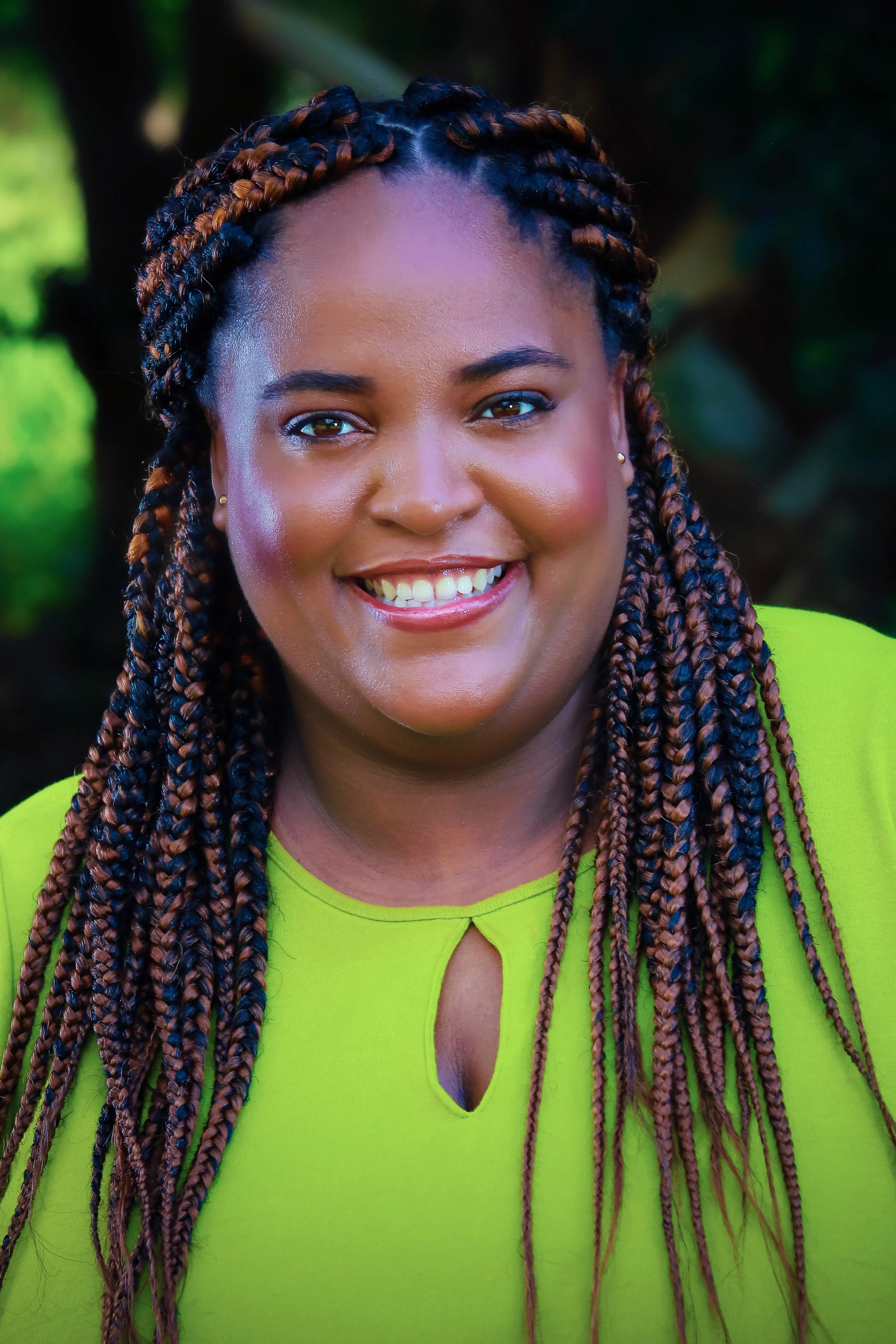Spotlight: In All Good Faith by Liza Nash Taylor
/A riveting new historical fiction novel, In All Good Faith continues the story of May Marshall, the captivating protagonist introduced in Taylor’s acclaimed 2020 debut, Etiquette for Runaways.
In the summer of 1932, Americans are coming to realize that the financial crash of 1929 was only the beginning of hard times. May Marshall has returned from Paris to settle at her family home in rural Keswick, Virginia. She struggles to keep her family farm and market afloat through the economic downturn. May finds herself juggling her marriage with a tempting opportunity to revamp the family business to adapt to changing times.
In a cold-water West End Boston tenement the fractured Sykes family scrapes by on an itinerant mechanic’s wages and home sewing. Having recently lost her mother, sixteen-year-old Dorrit Sykes questions the religious doctrine she was raised in. Dorrit is reclusive, held back by the anxiety attacks that have plagued her since childhood. Attempting to understand what limits her, she seeks inspiration in Nancy Drew mysteries and finds solace at the Boston Public Library, writing fairy stories for children. The library holds answers to both Dorrit’s exploration of faith and her quest to understand and manage her anxiety.
When Dorrit accompanies her father to Washington, DC, in the summer of 1932 to camp out and march with twenty thousand veterans intending to petition President Hoover for early payment of war bonuses, she begins an odyssey that will both traumatize and strengthen her. Along the way she redefines her faith, learning both self-sufficiency and how to accept help.
Dorrit’s and May’s lives intersect, and their fates will intertwine in ways that neither could have imagined or expected. Set against a backdrop of true historical events, In All Good Faith tells a story of two women’s unlikely success during the Great Depression.
Excerpt
Prologue
May Marshall
paris, france
april 1926
The vaulted arcades of the Rue de Rivoli streamed with fashionable women in spring linen. Some wore neat cloches trimmed with silk camellias. Others resembled graceful birds, with wide hat brims floating like languorous wings. The counterparts of these fashionable Madams and Mademoiselles, the flâneurs of Paris, sported plumage of cream flannel or pastel seersucker suits. Leaning in to converse, the men’s straw boaters touched—then stilled—the ladies’ hat brims. In pairs, they perched shoulder to shoulder at tiny café tables or crossed the avenue to promenade in the Jardin des Tuileries. Like a crow among doves, one black-clad crone hurried by, shopping basket clutched to her bosom.
May Marshall stood in one of these arcades, below the entrance of number 228, the Hotel Meurice, unaware of the afternoon crowd flowing by. In sixteen months in Paris she had passed these mosaic-tiled steps, these glass-and-brass revolving doors dozens of times. Now, she clasped her handbag, counting silently: Three steps up—one doorway, one vestibule, one lobby.
Three steps, one doorway, one vestibule, one lobby, and he would be there.
Byrd.
Eight months had passed since they had last seen each other, on that sad August day when they traveled together from Paris to the American Military Cemetery in Château-Thierry. Their goodbye that day had been shadowed by the remembrance of Byrd’s brother, and the grave they had sought and found, among those of 2,200 soldiers. They had parted with so much unsaid, with so much doubt and confusion. Byrd returned to Virginia and May remained in Paris, determined to honor a pledge to her loyal friend, Rocky, to help him open his first hair salon. She threw herself into the work, learning the business as they went along, building Rocky’s clientele while rebuilding her own confidence.
Four months later the salon was a raging success. Returning to the house after closing one night, May had let herself in, looking forward to a bath. Crossing the hall to the stairs, she stopped. A stack of mail lay on the entry table. On top, a green envelope with American stamps. Later she would remember the sequence of emotions—first, hopefulness. She took a step closer to the table. Her name, written with a black fountain pen. The right-slanting, choppy cursive.
A letter from Byrd.
In a matter of seconds hopefulness bloomed into elation. Her breath caught, pausing the moment. She didn’t know what she hoped to find. There were degrees of happy and well. Happy and well were relative, as in, I’m happy and well, doing splendidly without you. No. Fine would be acceptable. I’m fine and alive. She wondered, in that moment, if she might prefer to read, I’m miserably unhappy, and cannot live without you?
Inside the envelope were six scrawled pages stuck into a banal Christmas card illustrated with a Scottie dog holding a wrapped package in its paws. She had held her breath to the bottom of the first page, afraid to read on, afraid of what she might learn. Over the past months, she had, in her mind, composed her own letter, refining it over and over, hesitant to put pen to paper, to be the first to open communication, unsure if communication was even wanted.
His letter told of his new law office off Court Square in Charlottesville, C. Byrd Craig, Esq.; of Thanksgiving with his parents, of dove hunting in Bath County with his father. It was as if Byrd were in the room with her—the bedroom where she was living in Paris in her friend Rocky’s house, with its grand, robin’s-egg blue paneling and tall windows overlooking the Parc Monceau.
May had perched on the windowsill, holding the paper to her face, then touching the lines of ink, wanting to race through the pages. The early winter light turned blue outside and she forced herself to read slowly, to savor each word. He wrote matter-of-factly of his divorce being finalized, of the awkward explanations made to friends and colleagues—that his wife of ten months had run away with an older, former lover and no one’s heart had broken over it. He was living in a cottage in Keswick, on his parent’s property. She read Byrd’s words and knew that she still loved him.
The next three letters, in response to hers, grew more open, more confidential, with more of the ease she and Byrd had enjoyed all of those years ago, growing up as neighbors. It was what he wrote about Keswick that pulled at her heart; the vixen and three cubs with a den in the front field, the four new foals at his father’s farm, his parents’ annual Christmas party. She could picture it all—the hayfields and pastures between his family house and hers, bisected with lines of panel fencing, the deep green of the Southwest Mountains, the call-and-answer shrieks of red-tailed hawks, hunting in mated pairs.
Home. She had run from there and ended up here, in Paris. So many risks, so many mistakes. With each exchange of letters, the idea of returning home grew more appealing, and more so with the letters her father sent to her, with their own reconciliation and his news of Keswick Farm and the market.
Then, in early June; Byrd’s telegram. Did she want him to come to her?
Eight days later, here she was, standing on a street in Paris, studying the tile design of the hotel entrance with more attention than it deserved. May squared her shoulders and took the first step.
* * * * *
After three days together in Paris, they were engaged. Rocky helped Byrd to choose a ring at a shop in the Place Vendôme—a sapphire with diamond baguettes. Next, a stop at Western Union to send the fait accompli telegrams to her father and Byrd’s parents. Then, a blissful month alone together in a quiet stone house that belonged to one of Rocky’s clients, in the wine region, near Beaune. They had explored the French countryside, the vineyards, the old châteaux, and the village markets, sleeping late and dining at nine as the summer sun went down. The pungent aroma of chestnut blossoms wafted through the air.
On the steamship to New York, they hesitated to discuss what people back in Virginia might say. They decided to marry at the county courthouse, as quietly and privately as possible, as soon as they could get a license. They made plans for Byrd’s law practice and May tried to calm her nerves at the thought of seeing her father for the first time in almost two years. She steeled herself for the reaction of Byrd’s parents and what those reactions might churn up for her. It was as if she were back at college, arriving with her scholarship only to become aware of all of the things she was not—not from Richmond society, not a debutante, not the virginal, sweet-tempered, future Garden Club president Byrd’s mother probably hoped for.
May was returning home to Keswick, determined to begin afresh, to take her place as Byrd’s partner and a woman with a head for business. Things were going to be different this time.
From In All Good Faith by Liza Nash Taylor. Used with the permission of the publisher, Blackstone Publishing. Copyright ©2021 by Liza Nash Taylor.
Buy on Amazon | Audible | Bookshop.org
About the Author
Liza Nash Taylor, the author of Etiquette for Runaways, was a 2018 Hawthornden International Fellow and received her MFA from Vermont College of Fine Arts. The 2016 winner of the San Miguel Writer’s Conference Fiction Prize, her work has appeared in Microchondria II, Gargoyle Magazine, and Deep South, amongst others. A native Virginian, she lives in Keswick with her husband and dogs.

